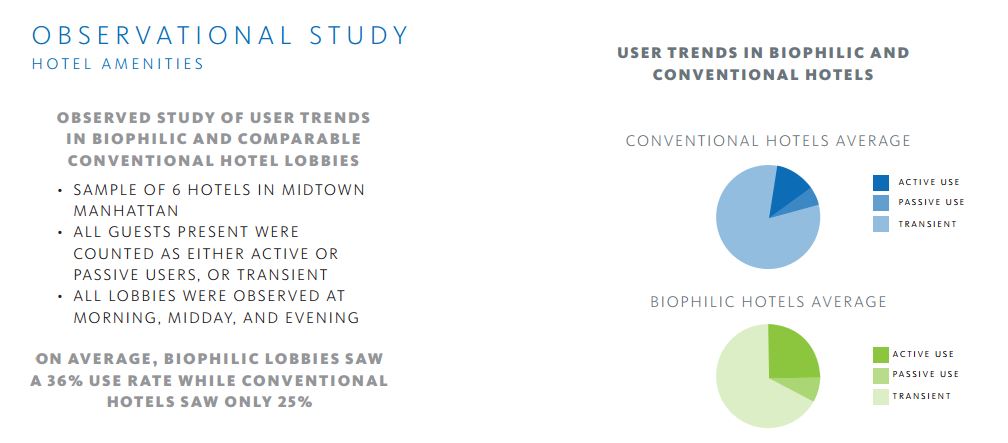LAS VEGAS — The connection people have with their environments affects nearly everything they do, the Human Spaces Global Report claims, so designing spaces that make them happy and comfortable can have a surprising number of benefits.
As the HD Expo kicked off at the Mandalay Bay Resort in Las Vegas, Lorraine Francis, director of hospitality interiors at Gensler; Bill Browning of Terrapin Bright Green; Erin Hoover, creative director and brand design strategist at Erin Hoover; and Waad El Hadidy, design director of Starwood Capital, discussed “biophilia”—people’s connection to nature and the study of environments on psychological well-being.
“As hotel designers and owners, you want to deliver joy,” Hoover said. To that end, designers and hoteliers should focus less on what kind of TV a room needs and more on determining what it is about a space that makes people happy. For that, all of the designers cited nature as a key driver of joy, and discussed how it could be incorporated into hotel design.
1Hotels
El Hadidy helped design the 1Hotel in Brooklyn, which opened earlier this year after extensive delays due to Hurricane Sandy in 2012. “Our belief is that if we activate each of the five senses in a positive way, that creates joy,” she said. The team created a custom scent for the hotel (“Scent has been shown to have one of the strongest connections to memory,” she said), installed tactile walls that guests are allowed to touch and feel, incorporated lots of greenery and artwork, attracted birds to sing by the doorway and partnered with chefs to prepare “unfussy” food.
“We look for ways to inspire people subtly without being preachy,” El Hadidy said. For example, drinking water at the hotel is triple-filtered, so rather than use plastic bottles, signs have been placed in rooms assuring guests that they have an unlimited supply of natural water from the built-in dispensers. The hotel also has a water-collection system to minimize the hotel's reliance on the city's water supply.
Rooms with a View
For areas where incorporating live plants or running water is impractical, Browning suggested evoking nature with design. For example, watching a roaring fireplace can create a soothing effect—but what the eye actually sees is “a dance of repeating patterns” in the flames that trigger an “opiate” reaction in the brain. “When we can use fractals in fabric design, the brain responds in a great way,” Browning said.
“Using art that is inspired by nature or that includes elements of fractal patterns is a way of bringing biophilic theory into practice,” Hoover said.

If designers can’t bring the outdoors inside, then they can use large windows to let guests experience as much of the outdoors as possible—and they can often generate more revenue in doing so. Using Hotels.com, Browning and his team searched for prices at 100 hotels—50 urban properties and 50 resorts. Looking at equal room types during peak season non-holiday weekends, the team found that resort guestrooms with views over the water can charge between 16 percent and 18 percent more, while urban hotels with views of water or a major landmark (like the Empire State Building or the Eiffel Tower) can charge 12 percent more. "We reflect biophilia in pricing," he said.
